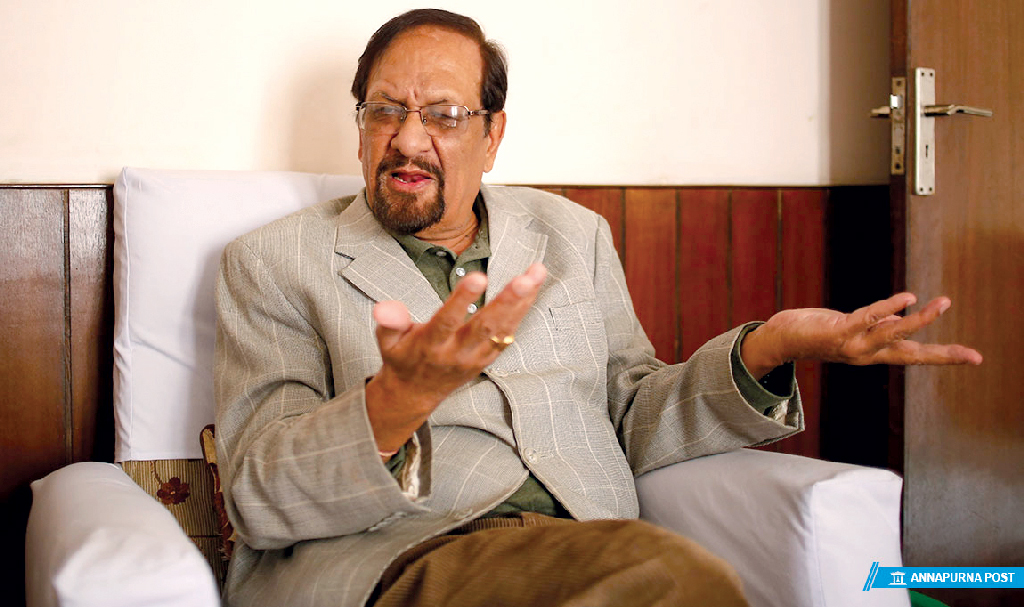Two lines of thought have always dominated Nepal’s political landscape: democratic and communist. While the communists think democrats are capitalists, the latter would like to call themselves social democrats, along the line of BP Koirala, late prime minister and leader of Nepali Congress. It’s a different matter that the term social democracy is little understood. Even the followers of Koirala are often at loss. Explaining it is the first task Ram Sharan Mahat undertakes in his latest book Trials, Tremors and Hope: The Political Economy of Contemporary Nepal. He does it beautifully. In the initial chapters, one will get a concise picture of the concept of social democracy.
“Given the contradictions between communism and democracy, it was obvious that the two couldn’t be practically combined in the real world,” Mahat writes. “But the positive elements of the two systems could be incorporated into a middle ground philosophy of democratic socialism.”
“The burgeoning model of socialism is liberal, democratic and market-oriented, but not market-dictated,” he elaborates. That gives the gist: think of the market and help it grow, just don’t let it dictate you.
“BP [Koirala] was adamant that ‘abundant production’ must precede distribution. The goal is to distribute ‘one glass of milk’ each to all citizens, ‘not a spoonful.’ Socialism could never be seen as ‘distribution of poverty’.”
Capitalist and socialist systems are borrowing from each other based on social and economic imperatives, giving credence to convergence theory, Mahat concludes.
Nepal’s post-1990 liberal economic policy hit roadblocks in a new democracy perturbed by awful inter- and intra-party conflicts, a Maoist insurgency, and a stupid royal takeover. The perennially hung parliament and ever-changing governments stopped those policies from bearing fruit. They nevertheless gave a roadmap for Nepal, which continues till date. Mahat, a six-time finance minister, is credited as the man behind Nepal’s economic liberalism.
The Maoist conflict was indeed a serious setback for the country. Though the exact estimate is not available, the cost of the war, according to DFID, was between 8-10 percent of GDP. It simply means that instead of aiming for 8-10 percent growth and making capital investment accordingly, the country was spending almost one tenth of its resources on a violent civil war. Nepal Peace Campaign estimates that the cost of conflict between 1996 and 2003 was US $66.2 billion.
Mahat laments Nepal’s lost opportunity in hydropower as the country couldn’t start projects when investment cost was low. But hydropower is still a viable option. Nepal, however, will have to mostly depend on India for export. Antagonizing India is not an option. Mahat suggests consensus-building among political parties to negotiate with India on water rights and benefit-sharing.
But his support for the Koshi High Dam, a project India has been pushing in Nepal, can invite controversy. Also, he hails remittance as an important source of livelihood and the largest source of foreign exchange for Nepal. That can be contested too as other economists reckon heavy reliance on remittance is dangerous. 
Structure-wise, the book can be divided into four parts: chapter 1 gives brief philosophical background of socialist-democratic thoughts, while chapters 2-10 dwell on Nepal’s history of political economy starting from the BP Koirala days. The eleventh chapter, State of the Economy, talks about where we stand now and the last chapter, Challenges and Tasks Ahead, shows the way ahead. We ultimately need to act today to build the tomorrow that we want. In that sense, the last two chapters are the most important ones.
To sum up his recommendations for both today and future: make the new federal governance work; overcome the deep-rooted political culture that prevents implementation of written laws and policies; build and enable institutions at sub-national levels to perform constitutional duties, make them efficient in fiscal management; have a merit-based bureaucracy; scale up private investment; and ensure higher, sustained flow of FDI to expand Nepal’s industrial base. Populism leading to unproductive recurrent spending worries the author.
Mahat is a senior leader of Nepali Congress. But the economist in him speaks more in the book, which offers a professional analysis of Nepal’s political and economic history. It is a book worth investing in O
The 242-page book, published by Adroit Publishers, is priced at Indian Rupees 795 (NRs 1,272)
This review appeared in the print edition under the headline "A capitalist-socialist midway"











